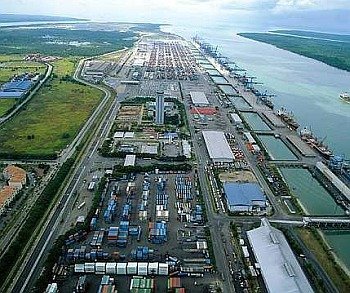Port Klang hit hard by alliance changes

The Malaysian government’s dramatic plans to massively ramp capacity at its ports, especially Port Klang, now look questionable as the dust settles on April 1’s new container alliance shuffle.
Just over five months ago, the world’s leading liners realigned into three new groupings, something that in Southeast Asia has seen a dramatic shift of port calls away from Malaysia to neighbouring Singapore.
Singapore’s canny decision to grant joint venture terminals to the likes of Cosco and CMA CGM is paying off, with the Ocean Alliance (of which both liners are key members) selecting Singapore as its Southeast Asian hub. Moreover, Hapag-Lloyd’s merger with United Arab Shipping Company (UASC) has seen the Middle Eastern liner part ways with Port Klang for Singapore too.
At Port Klang – which features terminals Westports and Northport – throughput was down 8.4% year-on-year to 3m teu in the second quarter, the first three months following the start of the new global alliance structure. Amid a resurgent global box shipping picture, Port Klang stood out as the only top 20 boxport to have suffered a decline in throughput in the second quarter.
A report by investment bank UOB-Kay Hian suggests next year’s prospects for Westports are “murky”.
The loss of CMA CGM and UASC’s transhipment volumes could hit Port Klang by as much as 2m teu per year.
“Port Klang lost major connectivity [on Asia-Europe routes] after the launch of the new alliances in favour of Tanjung Pelepas and Singapore,” container shipping consultants SeaIntel noted in a recent weekly report. SeaIntel also noted Port Klang had seen a “significant decline” in the number of port calls on Asia-Mediterranean routes.
The declining box numbers comes just as the Malaysian government has backed multiple port development projects.
Last month Kuala Lumpur approved in principle plans submitted by Westports to more than double its annual container handling capacity to 30m teu.
Between neighbours Singapore and Malaysia alone more than 60m teu of new container terminal capacity is slated for construction in the coming couple of decades.
Dr Jonathan Beard, one of Asia’s most respected ports experts and the head of transportation and logistics in Asia for consultants Arcadis, told Splash last month: “The vast majority of proposed new capacity is targeted at the regional transhipment market – there is only so much demand to go around, and a limited number of liner alliances that determine hub strategy and those hubs are not easily moved.”
Westports currently operates eight adjacent terminals with a ninth due onstream soon which will give the port an annual design capacity of 13.5m teu.
Westports has laid out plans another 10 terminals through to 2040.
The Port Klang Authority (PKA) has also detailed plans to develop a huge new terminal complex on a nearby island. To be built on Pulau Carey the RM200bn ($44.7bn) project has attracted interests from Malaysian and Indian conglomerates.
In and around the Port Klang area, many other port developments are also underway. Just 86 km south is the RM12.5bn Kuala Linggi International Port in Malacca, which is aimed at the oil and gas industry. Then there is Melaka Gateway, 126km from Pulau Carey, a project costing RM43bn.
Directly opposite Singapore lies the Port of Tanjung Pelepas (PTP), a fast growing port that has outlined plans to double its capacity to 22.2m teu by 2030.
